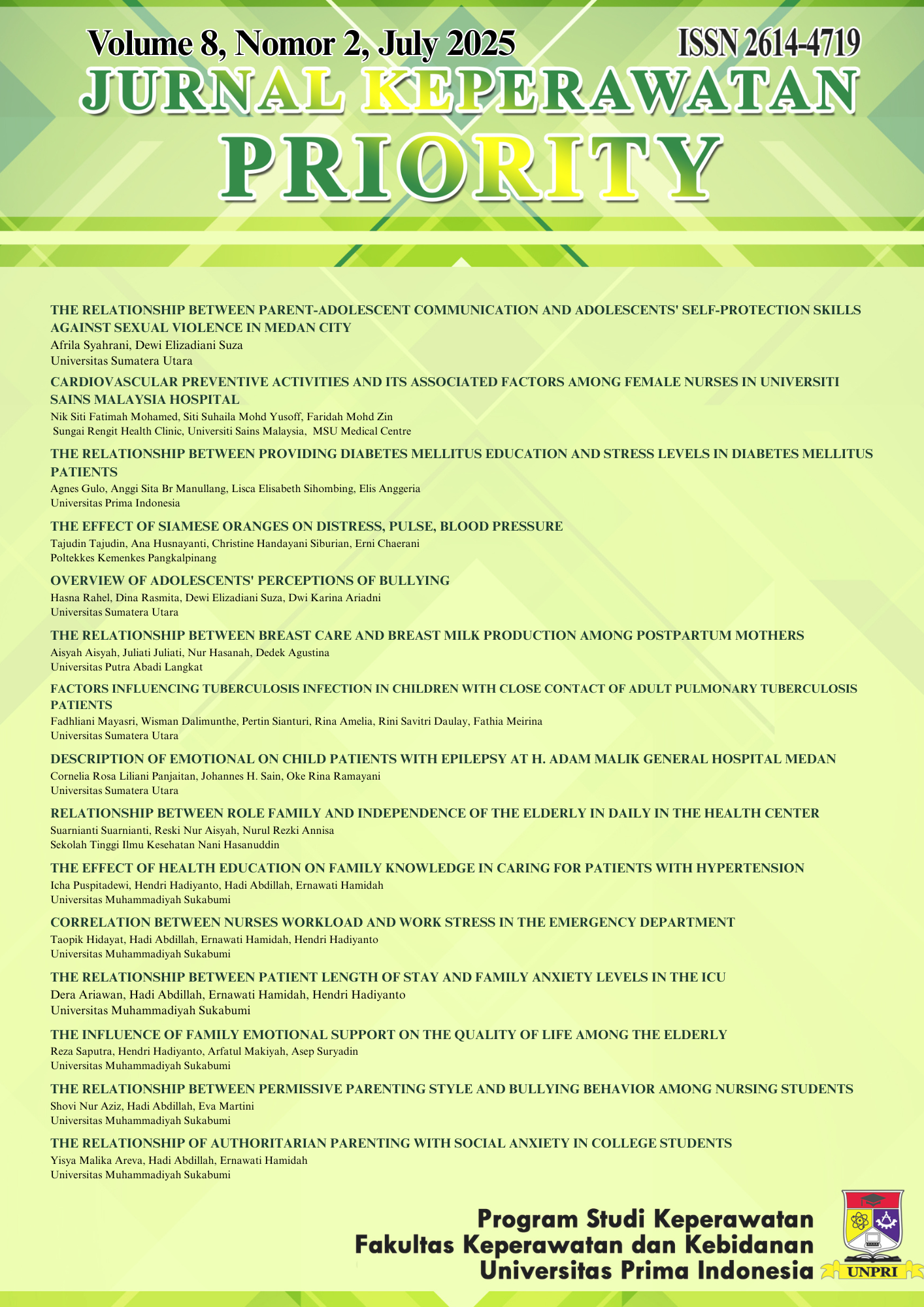Correlation Between Nurses Workload and Work Stress in the Emergency Department
DOI:
https://doi.org/10.34012/jukep.v8i2.7024Keywords:
workload, work stress, emergency room, nursesAbstract
Workload and work stress among nurses, especially in the Emergency Room (ER), are crucial issues that affect the quality of health services. This study aims to determine the relationship between nurses’ workload and work stress in the ER of Jampang Kulon Regional General Hospital. A quantitative correlational research design was used with a cross-sectional approach. The population consisted of 29 ER nurses, selected through total sampling. Data were collected using the NASA-TLX (Task Load Index) questionnaire to measure workload and a work stress questionnaire developed based on the HSE (Health and Safety Executive) standards. The results showed that 62.1% of nurses experienced a high workload, while 58.6% experienced moderate work stress. The Spearman rank test indicated a significant positive correlation between workload and work stress (p = 0.001; r = 0.642), meaning that an increase in workload is associated with an increase in work stress. This finding highlights the importance of workload management to reduce stress levels among nurses. Improving work scheduling, increasing staffing ratios, and providing regular stress management programs are recommended to enhance the nurses' well-being and service performance. In conclusion, there is a significant relationship between workload and work stress among nurses in the ER of Jampang Kulon Hospital.
Downloads
Published
How to Cite
Issue
Section
License
Copyright (c) 2025 Taopik Hidayat, Hadi Abdillah, Ernawati Hamidah, Hendri Hadiyanto

This work is licensed under a Creative Commons Attribution 4.0 International License.
Authors who publish their manuscripts through the Journal of Keperawatan Priority agree to the following:
- Copyright to the manuscripts of scientific papers in this Journal is held by the author.
- The author surrenders the rights when first publishing the manuscript of his scientific work and simultaneously the author grants permission / license by referring to the Creative Commons Attribution 4.0 International License to other parties to distribute his scientific work while still giving credit to the author and the Journal of Journal Keperawatan Priority as the first publication medium for the work.
- Matters relating to the non-exclusivity of the distribution of the Journal that publishes the author's scientific work can be agreed separately (for example: requests to place the work in the library of an institution or publish it as a book) with the author as one of the parties to the agreement and with credit to sJournal ofJournal Keperawatan Priority as the first publication medium for the work in question.
- Authors can and are expected to publish their work online (e.g. in a Repository or on their Organization's/Institution's website) before and during the manuscript submission process, as such efforts can increase citation exchange earlier and with a wider scope.

















